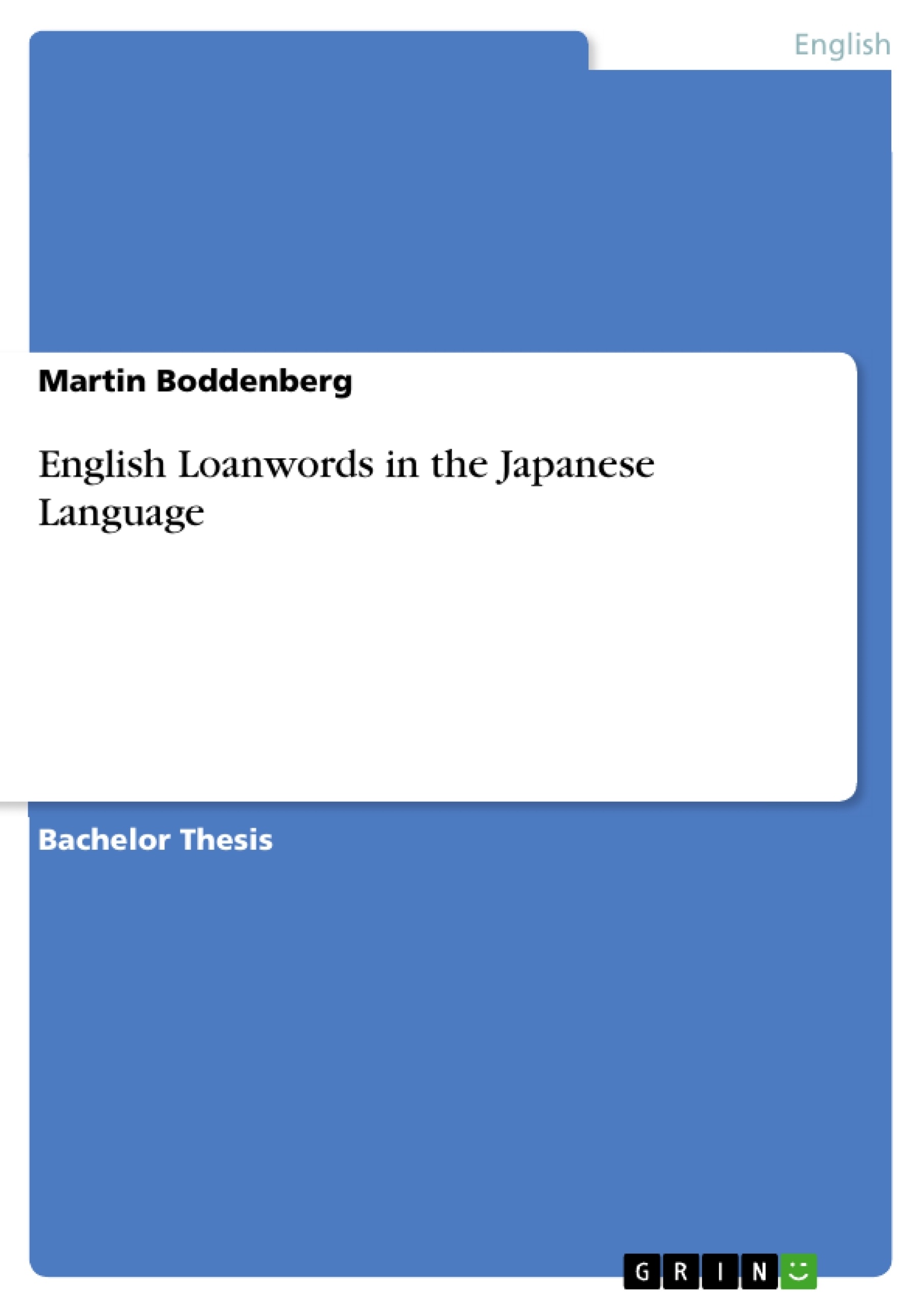Nowadays English has become the most important source of loanwords in Japanese by far. About 95% of all gairaigo loanwords (“words coming from abroad”, i.e. words originating from European languages) derived from the English language and it is estimated that about
5-10% of the Japanese lexicon are of English origin today (Stanlaw, 2004, p.1 + p.13). The status of the English language is high in Japan. It has become a marker of high education and openness to other (Western) cultures. Nearly every Japanese pupil is taught English for at least six years at school (from seventh to twelfth grade), but there is the possibility for private schools to start teaching eikaiwa (English conversation) from third grade on. English classes are obligatory for university students of all subjects, although it should be mentioned that these classes are usually overcrowded (often more than one hundred students) and that they take place only once a week for 90 minutes. A TOEFL test in 1997/98 among 26 Asian na-tions ranked Japan 25th and last together with North Korea (McKenzie, 2008, p 272). The Japanese government made heavy efforts to improve English teaching within the last decade. It was tried to motivate more Japanese pupils to spend a year abroad, only 1,000 Japanese pupils took chance of this opportunity in 2003, although there would have been provided money for 10,000 exchange students. Besides this, there are now more assistant language teachers - mainly from the inner circle of English speaking countries, but also, to a much smaller extent, from former British colonies - at Japanese schools to improve the eikaiwa lessons. The common eigo (English) lessons are still held by Japanese teachers and are strongly text and Grammar based, usually a translation into Japanese is given.
Although the Western world was the model for the Japanese modernisation in the 19th and 20th century and English was without any doubt the means of communication with the West, the vast majority of the Japanese population has never become fluent English speakers.
Inhaltsverzeichnis (Table of Contents)
- Preface
- A Short History of the Japanese Language
- Borrowing from the English Language
- Reasons for and Functions of Borrowing
- Forms of Borrowing
- Fields of Borrowing
- Integration of English Loanwords into Japanese
- Intelligibility and Acceptance of English Loanwords in Japan
- Conclusion
Zielsetzung und Themenschwerpunkte (Objectives and Key Themes)
This text examines the influence of the English language on Japanese, particularly focusing on the adoption and integration of English loanwords. The work explores the historical context of this language contact, analyzes the reasons behind borrowing, and investigates the various forms and fields of borrowing.
- The historical context of English loanwords in Japanese
- The reasons and functions behind borrowing from the English language
- The forms and fields of English loanword borrowing
- The integration of English loanwords into Japanese
- The intelligibility and acceptance of English loanwords in Japan
Zusammenfassung der Kapitel (Chapter Summaries)
The second chapter provides a brief overview of the history of the Japanese language, highlighting the historical development and the influence of Chinese on the language. The third chapter delves into the topic of English loanwords in Japanese, focusing on the reasons behind their adoption, the various forms of borrowing, the specific fields where these words are used, and the process of integrating them into Japanese.
Schlüsselwörter (Keywords)
This text focuses on the influence of English on Japanese, examining the integration of English loanwords into the Japanese language. Key themes include language contact, borrowing, loanwords, gairaigo, intelligibility, and cultural influence. The text also touches upon the history of Japan's modernization and its relationship with Western powers.
- Quote paper
- Bachelor of Arts Martin Boddenberg (Author), 2011, English Loanwords in the Japanese Language, Munich, GRIN Verlag, https://www.grin.com/document/182062




